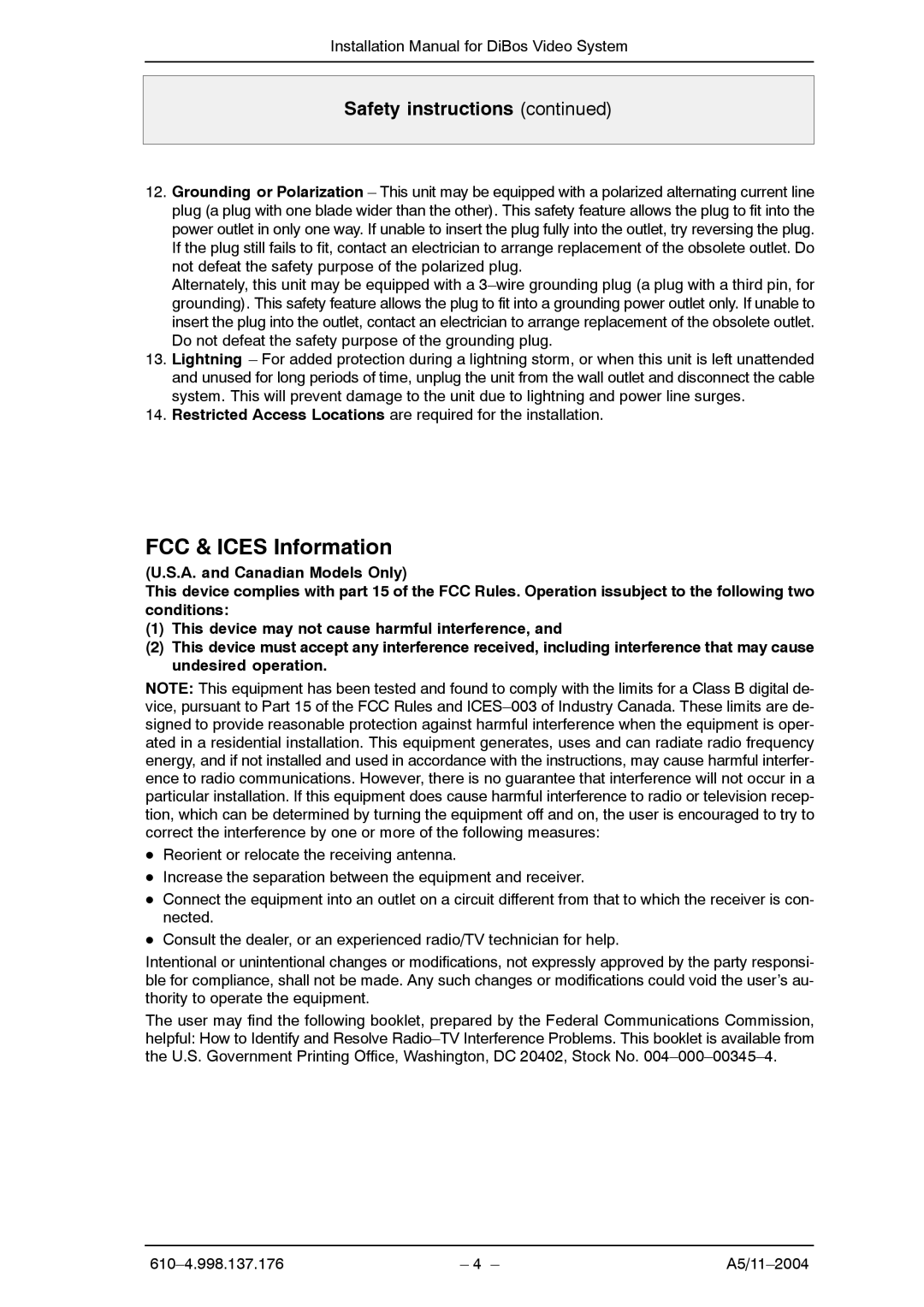
Installation Manual for DiBos Video System
Safety instructions (continued)
12.Grounding or Polarization – This unit may be equipped with a polarized alternating current line plug (a plug with one blade wider than the other). This safety feature allows the plug to fit into the power outlet in only one way. If unable to insert the plug fully into the outlet, try reversing the plug. If the plug still fails to fit, contact an electrician to arrange replacement of the obsolete outlet. Do not defeat the safety purpose of the polarized plug.
Alternately, this unit may be equipped with a
13.Lightning – For added protection during a lightning storm, or when this unit is left unattended and unused for long periods of time, unplug the unit from the wall outlet and disconnect the cable system. This will prevent damage to the unit due to lightning and power line surges.
14.Restricted Access Locations are required for the installation.
FCC & ICES Information
(U.S.A. and Canadian Models Only)
This device complies with part 15 of the FCC Rules. Operation issubject to the following two conditions:
(1)This device may not cause harmful interference, and
(2)This device must accept any interference received, including interference that may cause undesired operation.
NOTE: This equipment has been tested and found to comply with the limits for a Class B digital de- vice, pursuant to Part 15 of the FCC Rules and
DReorient or relocate the receiving antenna.
DIncrease the separation between the equipment and receiver.
DConnect the equipment into an outlet on a circuit different from that to which the receiver is con- nected.
DConsult the dealer, or an experienced radio/TV technician for help.
Intentional or unintentional changes or modifications, not expressly approved by the party responsi- ble for compliance, shall not be made. Any such changes or modifications could void the user’s au- thority to operate the equipment.
The user may find the following booklet, prepared by the Federal Communications Commission, helpful: How to Identify and Resolve
– 4 – |
